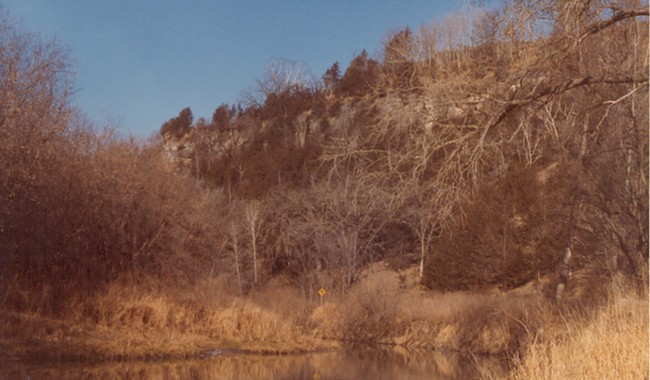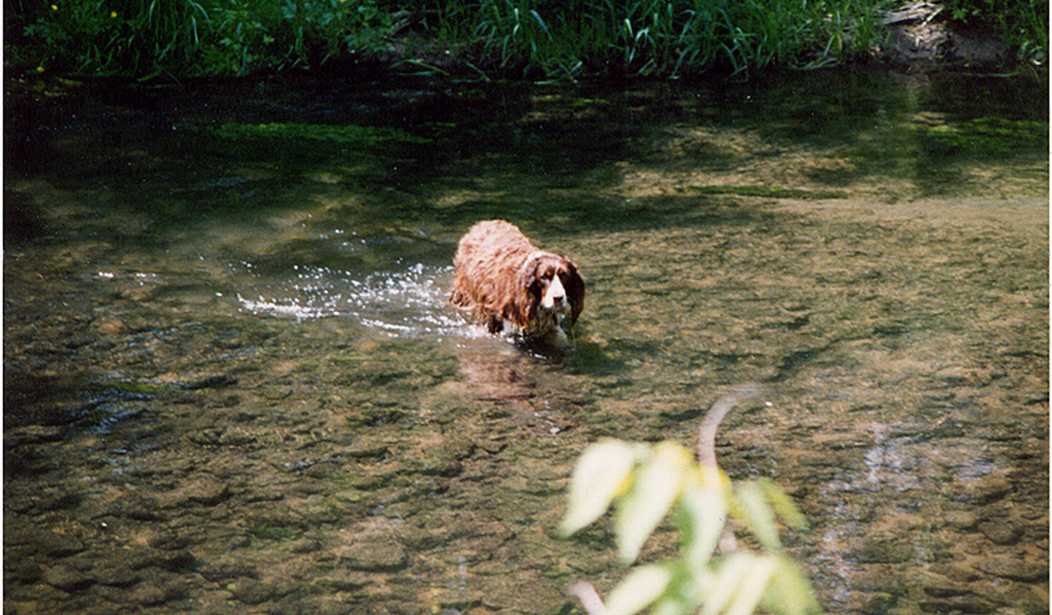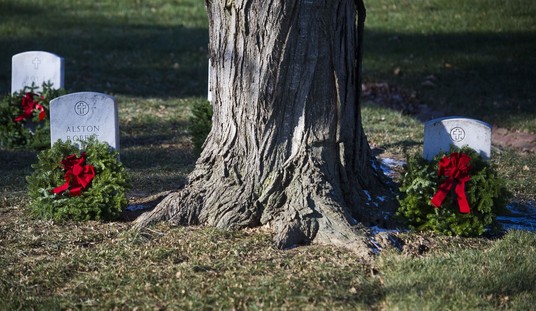Doggone!
These days, the only pet I keep around is my wife, but I have always considered myself a dog person. I still do today, in fact, and one day, I’ll probably have another dog. But boy, a dog can be a real handful, especially gun dogs.
Most everyone is familiar with Man’s Best Friend, those lovable shaggy mutts that follow us around, love us unconditionally no matter how unpleasant we may be, fetch sticks and bark at squirrels, and do a million amusing, adorable, and admirable things.
But those of us who have owned and trained bird dogs know the other side of the story – how you can spend years and tons of money carefully training a dog from puppy-hood, indulge it, feed it, pamper it, bond with it, train and train and train and train for hours in the field and then, have that dog do something so unbelievably thickheaded and harebrained that you have to question your sanity in getting involved with Dogdom in the first place.
These days I travel a lot while conducting my business, which kind of precludes all the effort required in raising and training a puppy into a proficient gun dog. I’d like to have another good bird dog again someday but have known for a long time that this will probably have to wait until I retire. A while back, I wondered aloud why it was that I missed having a bird dog. Our oldest daughter, who has a beautiful, friendly yet rather knuckle-headed chocolate Labrador, said: “…because they will do anything to please and derp derp derp their way into your heart.” All true, but sometimes you have to wonder...
You Take the Good with the Bad
Folks who read outdoor magazines see those lovely portraits of well-groomed pointers locked up on a classic point, waiting for their master to walk up and flush a brace of grouse or a covey of bobwhites. One may also have occasion to peruse artwork of a wet, happy, noble black Labrador holding a recently deceased mallard after a flawless retrieve.
Those moments happen, of course. Those dogs are real, as are their happy owners. But what you don’t see is the dark side; the fact that, say, that Labrador has to eat the first duck of every day before flawlessly retrieving all the others, or that the beautiful English Setter or German Wirehair in the first photo has the unbreakable habit of picking fights with raccoons and opossums.
It can be worse; the lovely portrayals in the magazines never show the owner’s reaction when the dog comes back full of porcupine quills or reeking of skunk.
A good friend of mine had a wonderful waterfowl dog, a Chesapeake Bay Retriever who was tough as nails, impervious to cold and wet, and good-natured and gentle around children. Rafe (the dog’s name) was the kind of waterfowling dog many sportsmen dreamed of – until you found out that he hated muskrats with a passion and would abandon a retrieve to frantically swim off after any water-rat that crossed his path. To my knowledge, he never caught one; but that didn’t stop a great deal of angry shouting by his owner to “…fetch, damn you!”
Plenty of my friends had dogs, either farm dogs, pet dogs, or hunting dogs (there is a fair amount of overlap among those groups.) Despite witnessing several boneheaded incidents by various mutts and hearing the tales of woe from their owners, when I was in my early twenties, I determined that I needed a bird dog of my very own.
Picking a Puppy
About 1982, I decided it was time to find me a good bird dog.
At the time, most of my bird hunting was upland game and some waterfowling. I talked to some dog folks, subscribed to Gun Dog magazine, (the internet in those days was on paper) did some research at the local library, and determined that the English Springer Spaniel was the best breed for my purposes. When I decided the time was right, in those pre-Internet days, I consulted the Craigslist of the time: The classified ads.
Now there are two kinds of Springer Spaniels. One is the show-bred dogs, who look increasingly like big Lady and the Tramp-style Cockers: Long fur (called feathers by aficionados of the breed) that drag on the floor, long ears, big domed heads, heavy bodies, and legs. Then there is the field strain, from whence you get workable gun dogs: Lean, rangy, long-legged, with much less feathering and normal doggie heads. I, of course, was looking for one of the latter, so when I saw an ad from a family down in the small town of Winthrop offering “field trial strain Springer Spaniel” pups for sale, I called and arranged a time when I could come see the pups.
There is, of course, a difference between “field strain” and “field trial.” Field trial pups from known, reputable field trial breeders, even then in the early 1980s, would sell for thousands of dollars. I couldn’t afford that; I needed a pup that would make a decent gun dog, but preferably with a price in tens of dollars. The ad I answered listed a price within my budget: $75. The pups in question were clearly of the field strain, but their only field trial connection was a grandfather, a multi-year field trial champion named Saighton’s Superspeed.
I proceeded to the farm supplied with notes on a bunch of flushing dog aptitude tests gleaned from the pages of Gun Dog magazine. There were three pups left when I arrived: A black and white male, a liver and white female, and an unusual little tricolor female, liver and white with tan cheeks and eyebrows.
All the nine-week-old pups did admirably well on the aptitude tests. All showed great willingness to retrieve an old, knotted sock; all showed visible excitement when exposed to a bunch of pheasant feathers tied to a stick, and so on. I was in something of a quandary as to which pup to pick when the little tricolor bitch came over, put a paw on my boot, and looked up at me with those spaniel eyes.
I took her home. We named her Gypsy for her tricolored coat and for a Fleetwood Mac song that was popular at the time.
A Life of Adventure
Another reason for choosing the name Gypsy was because, at the time, I had a theory that a name with at least two vowels separated by one consonant was the best combination for a dog to recognize its name called from a distance. For her first year, however, I was soon convinced that my pup would grow up thinking her name was “Dammit,” due to the number of times I was shouting “No, dammit” or “Come, dammit!”
Gyp was a wonderful dog in many ways, and I quickly came to love her without reservation. No dog can gaze at you with the unfailing devotion of a spaniel, with those big, liquid brown eyes, and she was a master at that. Gypsy was gentle-natured, even with the two-year-old daughter my first wife and I had at the time. She was appropriately respectful of the massive, 18-pound tomcat that she shared the house with. She was biddable, obedient, and anxious to please, and once she learned a task, she never forgot it. But teaching her those tasks, on the other hand… She was obedient and anxious indeed, but she wasn’t overly bright.
To this day, I remain convinced that an X-ray of Gypsy’s head would have revealed a solid dome of bone with a little acorn-sized brain hidden somewhere in the ossified structure of her skull. For example, one of the more difficult tricks to teach a flushing dog is how to deal with a running pheasant; the trick to teach the dog is to run past the bird and turn it back towards the hunter, so the pheasant will find itself blocked in and flush instead of running.
Gyp learned to respond to whistle commands and hand signals very quickly, but the turnaround trick was a little tougher; she saw no problem with running, oh, say, a half-mile ahead to try to turn a bird that her excellent nose told her was somewhere over the horizon, legging it for greener pastures.
She eventually learned that, though, and by the time her first hunting season rolled around, the nine-month-old pup was reliably scouring the field about fifteen to twenty yards to my front in the windshield-wiper pattern used by good flushing dogs.
I took her to precisely one trial. It wasn’t a field trial, just an informal local “retriever trial” using live ducks. Gyp was still a pup, less than a year old, but loved the water and was by then an accomplished retriever. When her turn came, the trial judge took a live wing-bound mallard drake, fired a starter pistol, and tossed the duck into a big pond.
I shouted, “Fetch ‘er up!” Gyp hit the water and paddled out to the old, trial-wise drake, who promptly hauled off and drilled his stone-hard beak into my puppy’s eye.
Gyp backpaddled, examined the old, hissing drake for a moment, then returned to the bank. She never touched any waterfowl of any kind again for the rest of her long life. Not just mallards, mind; wood ducks, widgeon, teal, anything with webbed feet, she wouldn’t touch.
The bad part was the local small-town news coverage. A buddy of mine was a local news cameraman, and he saw to it that my pup was featured prominently in the six o’clock news that evening, prompting many laughing phone calls from the group of miscreants I called my friends.
But back to Gypsy. She eventually became a good, even accomplished bird dog. We hunted grouse, pheasants, and partridge across much of the Midwest and, later, quail and mountain grouse in Colorado. Gyp would even retrieve rabbits, which most dogs will resist due to the loose fur coming off in their mouths.
That’s not to say, of course, that she didn’t have some bad habits as well.
On the Other Hand: Mice, Cattle, and Worse
The mouse issue was partly my fault.
Gypsy loved hunting mice, and to be honest, I let her get away with it on family camping trips. Mice have the unfortunate role of being, essentially, nature’s nachos; everything eats them. On summer family camping trips, Gypsy would spend a great deal of time hunting mice in the tall grass around our campsite, and she was quite good at it; the inevitable pounce would be quickly followed by the sight of a mouse caught, tossed in the air, caught again and swallowed after a few crunchy bites.
The problem was that she was also easily distracted by mice when we were hunting, but that was a minor problem easily addressed by the application of the instep of my boot to her backside and the command “Birds, dammit!” But there are worse things than hunting mice.
I’ve talked about the risks of sharing the landscape with cattle before. With a gun dog around, the risks increase, not necessarily because of the cattle themselves (although I’ve heard many a tale of a bone-head dog that somehow antagonized a herd and ran back to The Boss, with a few dozen angry bovines in pursuit) but rather the after-effects a herd can have on their pasturage.
And Gypsy loved those aftereffects.
There’s little as annoying on an upland bird hunt as sending out a brown-and-white dog and getting back a green one. To Gypsy, the scent of fresh cow pie was more scintillating than Chanel No. 5 — a lovely, entrancing bouquet that she would have to apply liberally by rolling in it, then returning to Boss (me) with the happy expression beaming "Hey, Boss, look, I smell lovely!”
This usually resulted in her getting tossed into the nearest body of water with a few shouted imprecations. As eager to please as she was, I was never able to dissuade her from rolling in cow pies.
Nasty as cow pies are, there is something about them that brings back gentle memories of days afield and warm autumn afternoons. But there is no such association with carrion. And as much as Gypsy loved fresh cow pat, she would just as eagerly roll in the carcass of a deer dead two weeks and be just as convinced that she smelled like a petunia on a summer afternoon. Worse, she would occasionally find a long-dead bird in the brush and, without my knowledge, eat it – at least it was without my knowledge until she inevitably threw it up, usually in my truck on the way home.
Her crowning achievement, though, came from her somewhat idealized picture of her capacities; while she was unfailingly gentle and considerate with small children, respectful of cats, and friendly with other dogs when it came to various other critters, she was convinced she was a cross between a dire wolf and the Hound of the Baskervilles. She would fight anything on four legs: raccoons, possums, badgers, you name it. But then the day came when I decided to take her on a high-country ptarmigan hunt above the treeline in the White River National Forest.
We had just crested a small pass, and there was a small stand of pine just below. Gyp had been doing her usual back-and-forth in the low brush, but there was a possibility of a grouse or two in the trees, so I piped out a “stop and look at me” two-note on my whistle and gave her a hand signal: “Check out those trees.”
Gypsy bounded into the pines as I made my way slowly down the slope. After a few moments, I heard her angry barking; realizing something was amiss, I pushed down through the narrow band of trees to spot my dog, fifty yards away, nose-to-nose with a big, angry boar cinnamon bear.
Gypsy was in the bear’s face barking. The bear, being a bear, wasn’t impressed with the expressed rage of my forty-pound dog and was holding up one front paw and popping its teeth. When my boneheaded dog didn’t back off, the bear swung that paw.
My unfortunate dog must have flown twenty feet. While she was enduring her first experience in a ballistic trajectory, I sucked in my breath, fearing that she’d hit the ground dead from a broken neck, as it looked like the bear had hit her right in the side of the head. But she wasn’t dead; just the opposite; she hit the stony tundra ground, rolled, and returned to the assault.
At this juncture, I began to wonder what would happen when she realized she was losing the fight and ran back to the Boss for succor, bringing an angry bear with her, and there I was, armed with only a 20-gauge shotgun loaded with low-brass shells with 7 ½ shot. After that, I never went into the mountains without a major caliber sidearm on my belt.
Fortunately for us both, the bear grew tired of the noise and chose to walk off. He disappeared into a draw nearby, and Gypsy returned to me, a little the worse for wear but her demeanor proud: “Did you see, Boss, I chased that bear right off!”
In the End…
 Gypsy lived to be almost eighteen. When mountain grouse season opened in her last autumn, I took her out once, on a bright, sunny warm day, intending to not really hunt but instead go on a gentle walk with my aged, arthritic dog. Gyp showed traces of the old birdy excitement and rustled around in the bushes for about a half-hour before finally giving up, returning to me with an apologetic air: “I’m sorry, Boss, I’m just really tired.” I took her home. The next month, while I was out elk hunting, I went into town for some supplies and took the chance to call home from the pay phone in front of the grocery store in Eagle. “If you want to see your dog again,” my wife informed me, “…you’d better come home.”
Gypsy lived to be almost eighteen. When mountain grouse season opened in her last autumn, I took her out once, on a bright, sunny warm day, intending to not really hunt but instead go on a gentle walk with my aged, arthritic dog. Gyp showed traces of the old birdy excitement and rustled around in the bushes for about a half-hour before finally giving up, returning to me with an apologetic air: “I’m sorry, Boss, I’m just really tired.” I took her home. The next month, while I was out elk hunting, I went into town for some supplies and took the chance to call home from the pay phone in front of the grocery store in Eagle. “If you want to see your dog again,” my wife informed me, “…you’d better come home.”
I went back to camp, pulled my gear together, told my hunting partners what was up, and drove back to Denver, arriving that evening. Gypsy died the next morning, taking her last breaths while looking up at me as I held her head in my hands; I was the last thing she saw. I was miserable for days. I loved that boneheaded old farm pup. Despite her bad habits and misadventures, I’ll always be convinced that a better dog never lived. We had covered a good part of a continent together, hunted a great variety of terrains and a great variety of birds; we saw every manner of weather from fine, warm days to blizzards. On cold nights in the back of a covered pickup bed, she would huddle close to me as I shivered in my sleeping bag, not because she was cold but because she loved me and wanted me to be warm. We sat together on many nights, looking into a campfire and sharing bits of badly cooked partridge or rabbit. We saw many a sunrise over an open field together and shared many a sunset from the top of an open ridge before making our way back to camp in the dark. A hunting dog is far more than a pet; it’s a partner and companion, a fellow adventurer, and one who loves the hunt as much as you do. My one regret at this point is that Gypsy didn't live to make the move with us from Colorado to Alaska. She would have loved it here.
Someday, probably after I retire and hang up my traveling shoes, I’d like to have another gun dog. Plenty of folks have pet dogs, either picked up from a friend or a pound or rescue; those kinds of dogs can be great pets, but while a family can grow to love an adorable mutt who needs accomplish no more in life than to turn money into poop, I’ll want a good working bird dog and will probably go to a gun dog breeder and drop a couple grand on a Pup of Great Promise. My budget these days is, after all, considerably less constrained now than it was in those long-ago days of my youth. And I do not doubt that, like my Gypsy, like every gun dog I’ve ever known, Pup of Great Promise will exhibit its bad habits and boneheaded tendencies.
This new pup will also have some big paw prints to fill.















